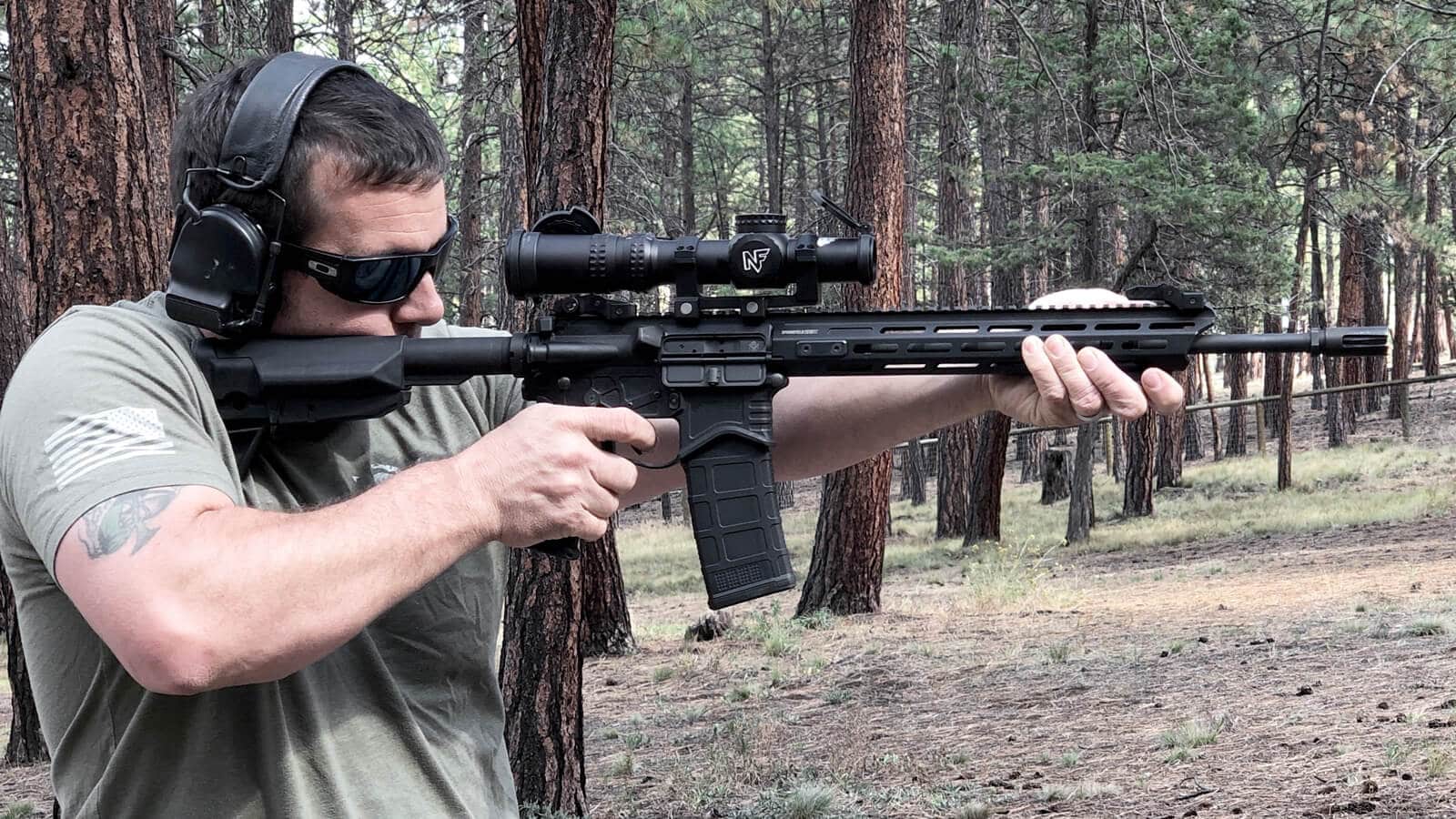Classes or Practice Time?

Acquiring skill with a handgun can be expensive. It costs both time and money, and unless we have unlimited time and unlimited money, it pays to be as efficient as we can with our training and practice time. Most of us have limited training budgets and limited time to improve our skills, so the question becomes how best to do this? To approach this a little differently than usual, I’d like to propose a thought exercise, where you must choose one option or the other, rather than both:
Option 1: Once a year, take a class from a nationally recognized firearms trainer.
Besides this class, you wouldn’t practice any more regularly than you normally do. For most people this means almost never dry practicing and going to the range once every few months at best, for less than a handful of range trips per year.
Option 2: Practice monthly at your range.
We forgo the trip to train with the professional firearms trainer, but instead dedicate ourselves to deliberate practice on a routine basis, including dry practice and live-fire practice. Let’s examine the strengths and weaknesses of each.
Take a Class
This is a fun option with considerable benefits. Taking classes from nationally recognized “big name” firearms trainers can take two major forms: Either attending a class hosted locally with a traveling trainer who’s teaching a class near your area or traveling to a fixed training facility like Gunsite Academy or Thunder Ranch. It’s especially convenient if the traveling trainer is teaching class within an hour of where you live, so you can avoid the additional cost of a motel, but the facilities hosting the class may or may not be limited. Conversely, when you travel to a fixed training facility, the facilities and amenities themselves are top notch but you incur the cost of travel to the facility itself and lodging in the form of a motel or a campsite.
What are the benefits of attending high-end classes from the best open-enrollment instructors? The biggest is substantial progress in your skills in a short period of time. While the cost of tuition, ammunition and travel to classes seems expensive, assuming you choose a quality trainer the gains you’ll make in just a one- or two-day class will be considerable compared to improvements you’d likely make on the range by yourself. The ability to learn new and optimal techniques under the supervision of a subject-matter expert is a cheat code to progress.
The downsides of only taking open-enrollment classes once or twice a year are both obvious and subtle. The cost and time investment of buying a slot and ammo, blocking off a weekend to attend, and traveling to the class are obvious. Less obvious is that practice time on your own is an essential part of getting maximum value out of attending training classes. Training is new skill acquisition. However, to ensure those new skills become “muscle memory,” where we can call on them in the long-term, we have to practice those skills post-class. If we don’t, then the valuable learning experience of a class becomes just a fun weekend. To get long-term use out of that new grip or trigger management technique, we’ve got to practice it regularly in the weeks and months following the class. Otherwise, we won’t be able to reliably be able to call on those new techniques on demand and under stress when we need them.
Routine Practice
Routine range practice is probably less fun than attending classes, but is typically much more accessible on a regular basis. It’s much more affordable in terms of time and money spent, and the fact it can be done routinely is a huge benefit. One of the most crucial keys to superior performance on demand is recent, relevant practice. In my former life as a Special Forces Soldier, it was often said that we do not rise to the occasion, but instead we sink to the level of our training. Going a step further, the level we will sink to on demand and under stress isn’t that one time that one day years ago when we were shooting excellently. It will likely be some percentage of our performance the last time we practiced. The longer it’s been since your last practice, the lower the percentage to which we’ll sink.
The key to making this a better option than a once a year class is the practice not only being routine, but deliberate, focused and measurable. Practice doesn’t make perfect. Perfect practice makes perfect. That means that we need to approach practice on our own in certain ways. First, we need to have a plan. Going into a practice range session without a solid idea of what skills we want to work on and how we’re going to do it will result in time and money spent but not much real benefit. So we need to research and study ahead before our range sessions to make sure we’re actually developing beneficial skills.
The good news is that a great number of reputable trainers post content to their websites and social media sites as free content we can study and adopt. Here at Shooting Illustrated we have a monthly Skills Check designed by some of the top trainers in the business. It isn’t as beneficial as attending one of their classes, but it’s probably better than listening to our uncle or the random shooter in the next lane at the indoor range. Before we go to the range and live-fire, study best practices available online and incorporate them into dry practice at home.
Then, identify what specific skills you want to work on at the range (accuracy and precision, recoil management, target transitions, malfunction clearance drills, etc.) and select drills that work those skills before you go to the range. Estimate round counts to dedicate to those drills and set performance goals that can be measured in accuracy or time. If you can, record yourself shooting the drills on video so you can watch yourself and identify technical mistakes. Then, record your results after the range sessions so that you can track your performance over time and know whether you’re getting better or not.
The downside of choosing the “range practice only” version of this thought exercise is twofold: It’s less efficient, and despite your best efforts you might be ingraining bad habits. It’s less efficient because 500 rounds shot under the watchful of a good instructor will lead to greater and more rapid growth than 500 rounds shot by yourself and trying to self-diagnose errors and inefficiencies. You might also think you’re doing XYZ correctly, but without any external feedback you might just be getting bad practice reps, which will make it harder to break the habit and fix the issue in the future.
Conclusion
So in this thought exercise which path is best? A once-a-year class or regular practice by yourself? Well, as a traveling firearms trainer myself, if I had to pick only one, I’d rather see people go to the range once a month with a solid plan and drills to work on specific measurable drills and track their improvement over time. That would lead to more consistent improvement year over year than taking a class once a year and not really shooting much outside that. The nice thing is that this is only a thought exercise, and it is possible, advisable even, to do both. If you want to grow your skills, then regular, deliberate practice is non-negotiable. Then, if you add in classes from a reputable trainer once or twice a year (even every couple years is better than not), then that will accelerate your growth as a shooter. So do yourself a favor today: Put a range session on the calendar and start making a range plan for the session. Then take a look at your favorite trainer’s calendar and consider signing up for a class in the next year.







